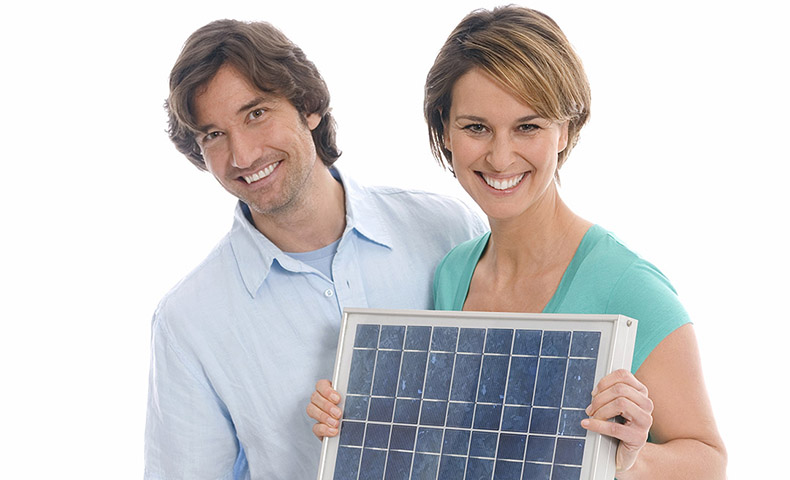
According to the Pew Research Center, anyone born between 1980 and 2000 (ages 19-39 in 2019) is considered a millennial, who number approximately 80 million of the U.S. population.
While they are criticized for being entitled and obsessed with technology, they are also praised for their eco-friendly trends. They are the main force behind tiny houses and eco-friendly tourism.
Sustainable living is not a fad for them, but a way of life, and as such, they are driving the solar expansion. In last year’s Deloitte Resources Study, 64% percent of millennials ranked using clean energy sources among their top three most important energy-related issues, compared with 52% of overall respondents. The researchers note that they are also more familiar with solar power when compared with other populations.
And as more millennials purchase homes and move into apartments on their own or with roommates and partners, their influence on the solar market will grow.
There are many ways they can do this.
Home solar installation
If they own a home, they can pay for the installation of solar panels. The costs for solar panels has dropped 61% in the past decade. A standard 5 kW home solar system - what an average American home requires to cover its energy needs - went from nearly $50,000 to about $16,000. But that’s without incentives, rebates and a 30% federal tax credit for solar installation, which brings it down to between $11,214 to $14,406. That’s about the cost of 10 of the newer model iphones.
To find out how much a solar power system for your home will cost, you can access the Hahasmart price checker that provides you with an estimate of equipment and installation costs by simply noting your home address and monthly electricity bill. They’ll even help you contact a reputable solar installer in your area.
If they still find this initial investment beyond their reach, they can lease solar panels and just pay a monthly bill for the duration of the contract, without having to worry about maintenance. But they won’t be able to take advantage of the discount programs that come with solar power.
Even taking out a loan to pay for the residential solar panels is a better option than staying with the utility. The payback period for the average solar rooftop array is between 6-8 years, which means that your system will be free for the next 20-30 years it will still be generating electricity.
In some states, there is also the option to do Property Assessed Clean Energy (PACE) to help with solar project financing. Starting in 2020, California will become the first state to require solar panels on new construction, meaning that many millennials will someday live in residences that are already equipped for solar.
Even if you live in a townhouse or gated community under a Home Owners Associations (HOA), California and a lot of other states have solar exemption laws that impede these organizations from blocking solar installations in their members’ property.
Community Solar
Another way of doing it is through community solar, where households subscribe to a portion of a local solar farm and generate savings on their electricity costs.
It’s a great model for those living in apartment buildings or another form of housing where they don’t have access to their own roof where to put the solar panels.
Community solar developers can also swap in new customers as they move in and out of the service area.
An example of one of these projects is a 204-kilowatt shared solar array built on top of the Shiloh Temple International Ministries in the city of Minneapolis, Minnesota that provides electricity to dozens of homes and apartment buildings nearby.
Under community solar projects, members can subscribe depending on their needs and means. Often, there’s a limit to how much power each subscriber can receive.
The subscription can also be pay-as-you-go, where the member pays a monthly fee for the actual solar energy produced by that amount of the solar garden or upfront, where they pay a fee amounting to the cost of a, say 10 years, of power consumption.
Blockchain
Another way of tapping into solar power is through blockchain-enabled pilot projects, such as the Brooklyn Microgrid in New York, which link solar power homes and allow the owners to trade energy in peer-to-peer transactions, acting as mini utilities.
The project which began in 2016 among two residents now allows a neighborhood of approximately 130 homes (some with photovoltaic solar panels and others without it) to trade and sell electricity among themselves.
Each member of the Brooklyn Microgrid has a transactive grid element (TAG-e meter), which measures production and consumption of energy and shares that date with other nearby meters.
Prosumers (sellers) sell their excess power at a discount to neighbors. They set their own rates, eliminating the need for them to be tied to an electrical grid.
They do these transactions through a mobile app. Buyers access the app and select their energy sources, set their daily budget for purchasing local energy and put a bid on the energy; they get selected through an auction.
HahaSmart Blog - More Solar Tips and Guide
HahaSmart News - Stay Informed
Your Solar Incentives - See Credits and Incentives in Your Area
Check Your Home's Solar Price - See How Much You Save
Register Now - Unlock The Lowest Solar Prices in Your Area


Input your address to see if it is solar friendly and how much you can save with solar.
Great. Your address is perfect for solar. Solar incentive is still available. Select monthly utility cost and calculate the size of solar system you will need now.
| kw System size | years Payback period | Lifetime savings |
No money down, 100% finance is available.
|
|
Check the price of solar panels in your area in a matter of seconds! |
Comments